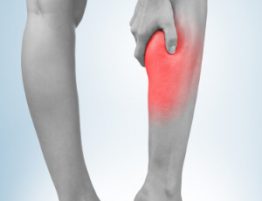
Overview

Urinary tract infection (UTI) is an infection in any part of the urinary system including kidneys, bladder and urethra. When it affects to the lower urinary tract, it is known as cystitis, while it is known as pyelonephritis when it affects to the upper urinary tract. Most infections involve the lower urinary tract.
Symptoms
Each type of UTI may result in more-specific signs and symptoms, depending on which part of your urinary tract is infected.
[table id=1 /]Causes
Urinary tract infections typically occur when bacteria enter the urinary tract through the urethra and begin to multiply in the bladder. Although the urinary system is designed to keep out such microscopic invaders, these defenses sometimes fail. When that happens, bacteria may take hold and grow into a full-blown infection in the urinary tract.
The most common UTIs occur mainly in women and affect the bladder and urethra.
[table id=2 /]Risk Factors
Urinary tract infections are common in women, and many women experience more than one infection during their lifetimes. Risk factors specific to women for UTIs include:
• Female anatomy. A woman has a shorter urethra than a man does, which shortens the distance that bacteria must travel to reach the bladder.
• Sexual activity. Sexually active women tend to have more UTIs than do women who aren’t sexually active. Having a new sexual partner also increases the risk.
• Certain types of birth control. Women who use diaphragms for birth control may be at higher risk, as well as women who use spermicidal agents.
• Menopause. After menopause, a decline in circulating estrogen causes changes in the urinary tract that make more vulnerable to infection.
Other risk factors for UTIs include:
• Urinary tract abnormalities. Babies born with urinary tract abnormalities that don’t allow urine to leave the body normally or cause urine to back up in the urethra have an increased risk of UTIs.
• Blockages in the urinary tract. Kidney stones or an enlarged prostate can trap urine in the bladder and increase the risk of UTIs.
• A suppressed immune system. Diabetes and other diseases that impair the immune system — the body’s defense against germs — can increase the risk of UTIs.
• Catheter use. People who can’t urinate on their own and use a tube (catheter) to urinate have an increased risk of UTIs. This may include people who are hospitalized, people with neurological problems that make it difficult to control their ability to urinate and people who are paralyzed.
• A recent urinary procedure. Urinary surgery or an exam of your urinary tract that involves medical instruments can both increase your risk of developing a urinary tract infection.
UTI in Oriental Medicine
UTI is manifested by frequent urination, painful urination and incontinence of urination, resulting mainly from accumulation of heat in the bladder, and sometimes also from emotional factors and deficiency of the kidney.
Recent study shows acupuncture treatments for UTI is very effective. Try acupuncture to minimize the symptom and boost up your quality of life!
Recommended treatment in Affinity Acupuncture
Affinity+ Style



